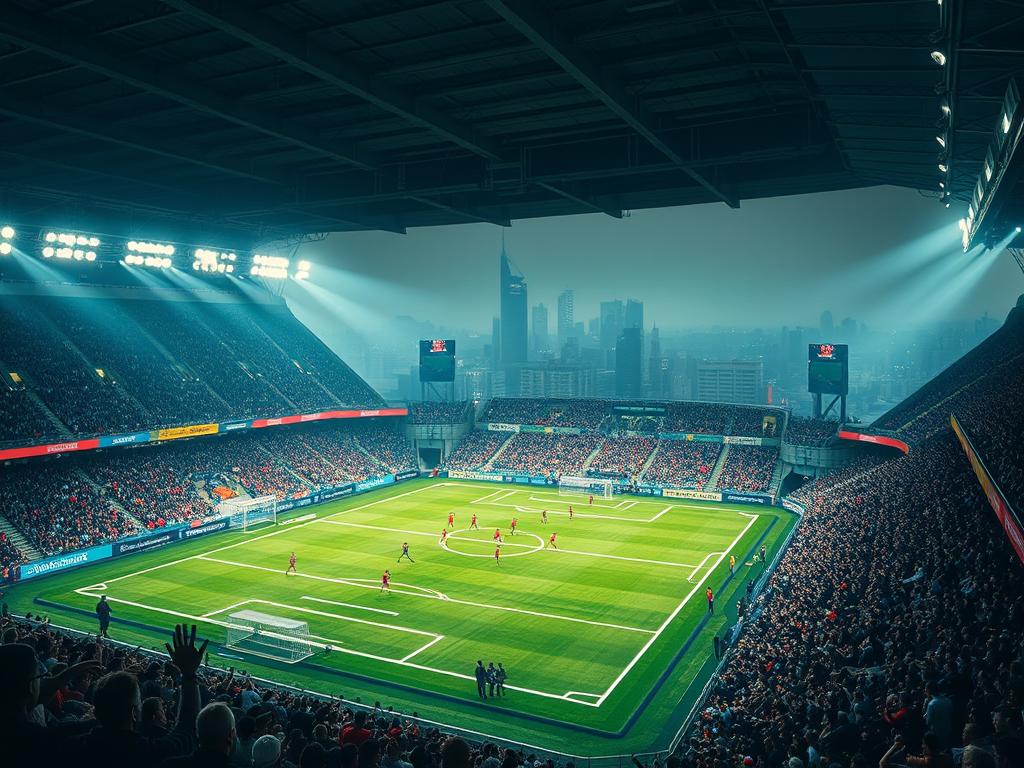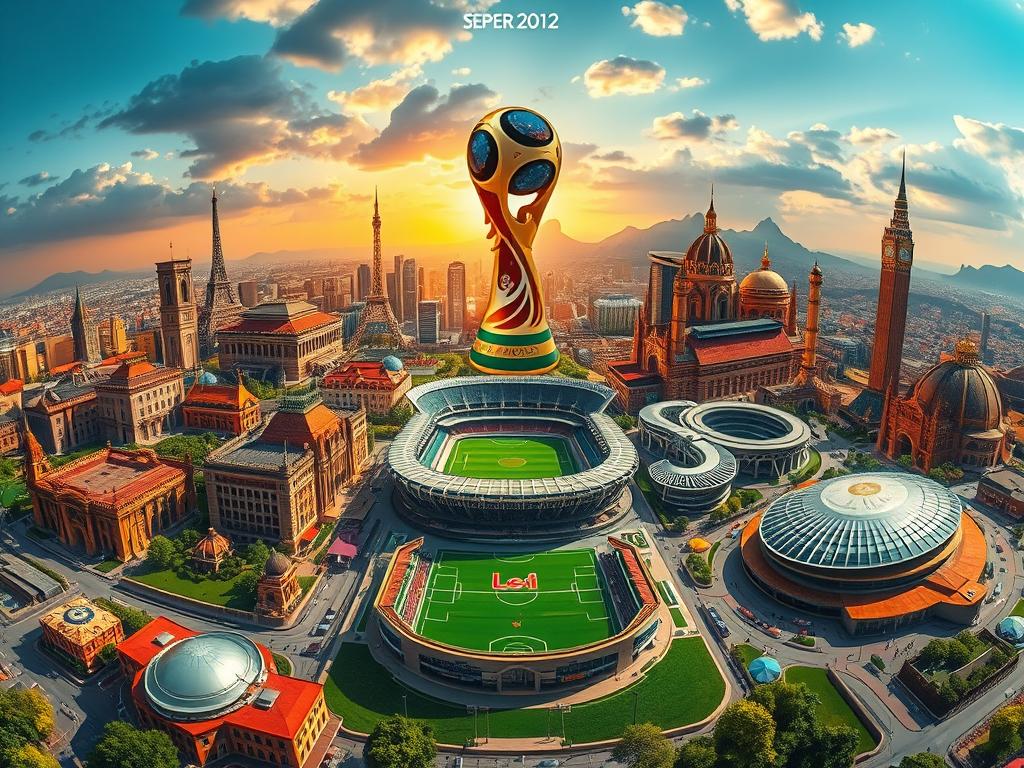Soccer fans, get ready—the UEFA Champions League is changing in a big way! Starting next season, the competition will feature a 36-team structure, replacing the traditional group stage format. This marks the first major overhaul in over two decades.
Instead of eight separate groups, all teams will compete in one unified league table. Every match counts, right up to the final whistle. The new “Swiss system” means clubs will play eight unique fixtures, creating more drama and fairer matchups.
Higher-ranked squads gain advantages in the knockout rounds, while every point could mean the difference between advancing or going home. Want to know how your favorite team stacks up? Let’s break it down.
Introduction to the New Champions League Format
Ready for a fresh twist on the world’s top club competition? The revamped structure kicks off next season, promising more drama and fairer matchups. Here’s why soccer will never be the same.
Why UEFA changed the format
UEFA wanted every game to matter. The old group stage often had dead rubbers—matches with nothing at stake. Now, with 36 teams in one league table, every kick counts.
Germany’s Bundesliga earned an extra spot thanks to its 2023 success. This rewards strong domestic league performance. No more safety net—teams can’t drop into the Europa League if they fail early.
Key differences from the previous system
Gone are the eight group stage pods. Instead, clubs play eight matches against varied opponents. PSG’s brutal schedule (Bayern, Man City, Atlético) tests the new seeding rules.
Arsenal’s coefficient ranking landed them in Pot 2, proving past performance matters. The new league phase is a marathon—not a sprint—with more chances for underdogs to shine.
How the League Phase Works
The biggest shake-up in European soccer is here—let’s dive into the new league phase! Gone are the old groups, replaced by a single table where all 36 teams battle for ranking. Every match now shapes the road to glory.

From groups to a single league table
Imagine one massive leaderboard instead of eight mini-tables. Clubs play eight matches—four home, four away—against opponents from different pot tiers. No more “easy” groups; even giants like Bayern Munich face stiffer tests.
Understanding the 36-team structure
Four seeding pots decide matchups using a computer draw. Your club’s coefficient ranking matters more than ever. Liverpool might draw Real Madrid early, while underdogs like Young Boys get a slightly smoother path.
Fixture creation and scheduling
The algorithm ensures variety: PSG could play Bayern, Man City, and Atlético in a brutal stretch. All 18 final-round games kick off simultaneously on January 29—picture the drama as 10 teams scramble for position with every goal!
- Key dates: Season opens September 17; climaxes January 29.
- Marquee matchdays: Top clashes spread across the league phase.
- No safety nets: Poor performers exit entirely—no Europa League fallback.
Qualification and Seeding Explained
Ever wondered how your favorite club secured its spot in Europe’s elite competition? The revamped system rewards performance like never before. Let’s unpack the rules shaping next season’s tournament.
How teams earn their spots
Gone are the days of simple domestic league finishes deciding everything. Now, coefficient rankings play a huge role. Germany’s Bundesliga, for example, earned an extra spot after Dortmund’s 2024 final run.
Top-four finishers in strong leagues auto-qualify. Aston Villa’s historic fifth-place Premier League finish? Their coefficient sealed the deal. Underdogs like Atalanta benefit too—their 55.375 average ranking landed a favorable draw.
The new seeding pots system
Pot 1 isn’t just for title holders anymore. Coefficients now rule, placing PSG higher despite Ligue 1’s lower profile. Arsenal’s past performance bumped them to Pot 2, avoiding early clashes with giants.
Leverkusen’s rise from Pot 2 to a mock top-five finish shows how dynamic this system is. Every match impacts future seeding—no more resting starters in “meaningless” games.
Country protection rules
Real Madrid won’t face Spanish rivals in the league phase. The new cap? Only two clubs per nation in any team’s schedule. This ensures variety and reduces repetitive matchups.
Fans get more diverse games, while teams avoid burnout. It’s a win-win—unless your squad draws Bayern and Man City back-to-back!
- Bundesliga boost: Germany’s fifth spot rewards consistent European success.
- Seeding shake-up: Past glory (like Arsenal’s) now pays dividends.
- Draw drama: Country protection spices up the round of 32.
The Knockout Stages: Road to the Final
Buckle up—the revamped knockout phase brings more drama and higher stakes than ever. Whether your club cruises straight through or fights tooth-and-nail in playoffs, every match now shapes their destiny. Let’s map the path to Munich’s grand finale!

Top 8 automatic qualification
Finish in the league’s top eight? You’re golden. These teams skip the playoffs entirely, landing directly in the round of 16. Picture Bayern Munich—ranked first—resting while others battle for survival.
But here’s the twist: seeding matters. The higher your finish, the easier your bracket. Rank 1–4 avoid other top seeds until the final. Rank 5–8? You might face a titan like Man City early.
Knockout phase playoffs (9th–24th)
Clubs ranked 9th–24th enter two-legged playoffs. Atlético Madrid, mock-ranked 15th, would face 24th-place PSV—a clash of styles with everything on the line.
Winners advance to the round of 16, while losers go home. No Europa League safety net this time. Imagine Inter Milan surviving a brutal tie against Aston Villa—only to meet Benfica next!
Bracket formation and advantages
From the round of 16 onward, it’s pure knockout soccer. Country protection vanishes, meaning Real Madrid could draw Barcelona early. Top seeds avoid each other until the semifinals, rewarding league-phase dominance.
Key dates to circle:
- Feb 11: Playoffs kick off
- May 31: Final at Allianz Arena
One thing’s certain: underdogs have a real shot now. Will your club seize the moment?
Key Changes Fans Need to Know
The new season brings game-changing updates every fan should understand. From scrapping Europa League fallbacks to nail-biting final-day drama, the Champions League is evolving. Let’s break down what’s different—and why it matters.
No more Europa League drop-down
Mid-table teams can’t rely on a safety net anymore. Under the old rules, finishing third in the group stage sent clubs to the Europa League. Now, only the top 24 advance—everyone else goes home.
Imagine the heartbreak for teams like Brest, eliminated on goal difference. No second chances. This raises the stakes for every match, especially for squads hovering near the 15-point qualification threshold.
Simultaneous final matchday
Picture this: 18 matches kicking off at once, with 10 teams fighting for survival. The new final matchday ensures maximum drama, mimicking the tension of a World Cup group stage finale.
Lille’s mock leap from 20th to 16th proves how one goal can change everything. No more staggered schedules—every fan will be glued to their screens as the table shifts in real time.
New tiebreaker rules
Forget simple goal difference. The updated system uses 10 criteria, including away goals and wins. Celtic’s mock exit (7 points but -4 GD) shows how tight the margins are.
Coefficient rankings now play a bigger role too. PSG’s ninth-place finish? They’d face a playoff despite a strong league run. Every detail counts in this high-stakes format.
- Marquee stat: Only 3 teams were mathematically eliminated before the final round in mock simulations.
- Underdog impact: Away goals still matter—a win in hostile territory could save your season.
- Fan takeaway: Expect more drama, fewer dead rubbers, and a true test of squad depth.
What the Future Holds for the Champions League
Change is coming fast to Europe’s top club tournament. The 2025 final at Allianz Arena could set the stage for even bigger shifts. Will 36 teams become the new norm? Fans might just find out soon.
By 2026, expect more matches—possibly 10 per team. UEFA may add Thursday games to fit the expanded schedule. Smaller clubs could benefit from Conference League adjustments too.
Competitive balance remains a hot topic. Man City’s coefficient dominance might reshape future draws. Financial fair play rules could also tighten, leveling the field.
One thing’s clear: this league is evolving. The 2024-25 season will test the waters, but the future looks thrilling. Stay tuned!







